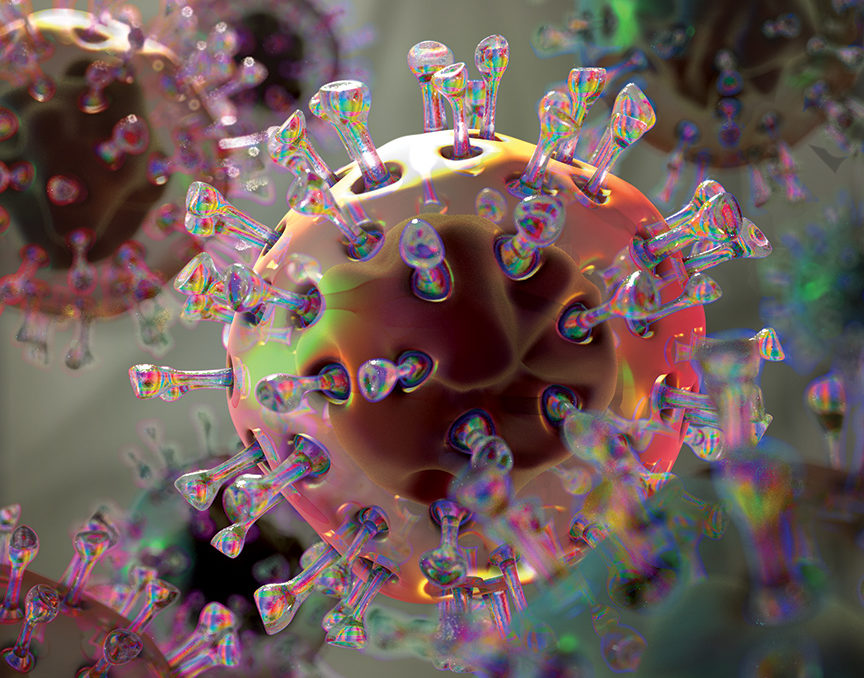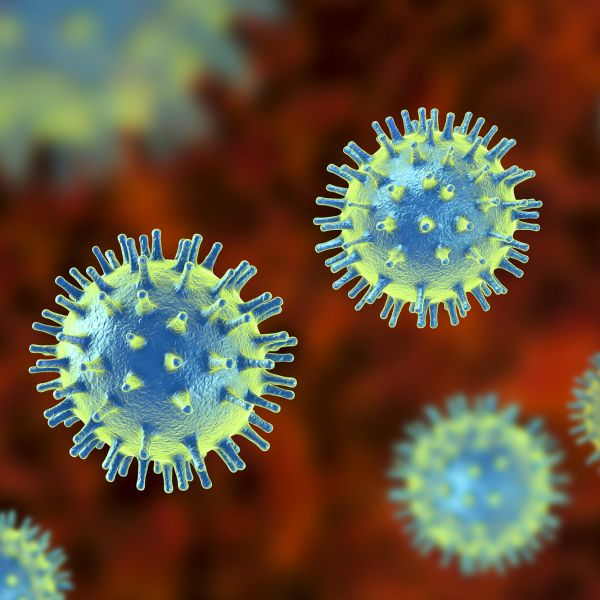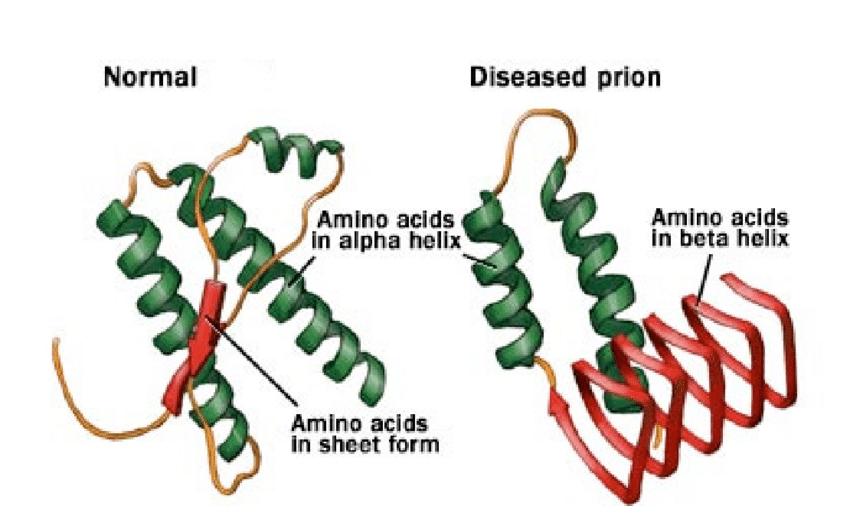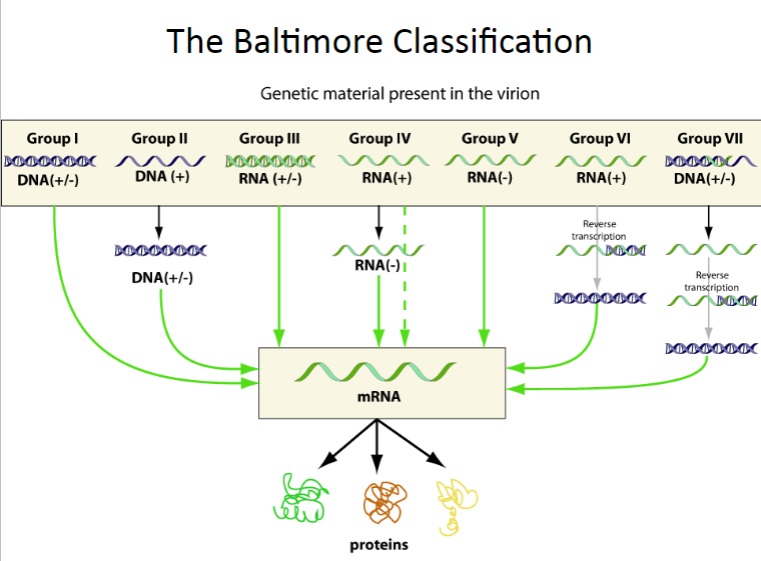
Essentials of Virology I & II
History of virology – where does the name come from and how many viruses we have now and where do they reside. What disease do viruses cause – examples to include cancer and immunodeficiency (HIV) What is a virus? - Comparison to bacteria and prions. Viruses as “obligate cellular parasites”. Essential features of a virus – nucleic acid genomes in protein shells, with or without a lipid covering Essential features of virus replication with the cell – entry into the cell, movement within the cell, genome replication, genome packaging into protein shells and exit from the cell
-
What is a virus

An infective agent that typically consists of a nuclei acid molecule in a protein coat, is too small to be seen by light microscopy, and is able to multiply only within the living cells of a host
-
Are viruses alive?
No
-
What are Prions?

-Prions are unique, infectious agents primarily composed of misfolded proteins
-Unlike viruses or bacteria, they lack genetic material like DNA or RNA
-The misfolded prion proteins induce normal proteins to adopt the abnormal shape, leading to a chain reaction of misfolding within the host's cells
-
Do prions contain nucleic acids? Can they replicate within the cell?
No
Yes
-
What do bacteria contain?
-Contain nucleic acid (DNA) covered in protein-Have a polysaccharide cell wall (a coat of sugar molecules)
-
What do viruses contain?
-Are nucleic acid (DNA or RNA) covered by proteins
-Have no cell wall
-May or may not have a lipid coat
-
How many viruses are there?
Unknown
-
How many virus infect mammals?
Over 320,000
-
What is 'host range'?
Describes the breadth of organisms a parasite is capable of infecting
-
What is short-range transmission? What modes of transfer does this include?
-Short-range transmission occurs over relatively limited distances, typically within a local or close-knit community
Can include these modes of transfer:
-Droplet
-Aerosol
-Direct (physical) contact
-Indirect contact (fomite)
-
What is long-range transmission? What modes of transfer does this include?
-Long-range transmission involves the spread of infectious agents over significant distances, often between different geographical regions or populations
Can include these modes of transfer:
-Aerosol
-Indirect contact
-
What does fomite mean?

Refers to any inanimate object or surface that can carry and transmit infectious agents, such as bacteria, viruses, or fungi
-
What are 2 ways that a virus can get around the body?
1) Implantation to local replication and spread
2) Via the bloodstream and nerves
-
What does tissue tropism mean?
The types of tissues where viruses can be found
-
Through processes of evolution, viruses evolve to replicate in tissues that favour transmission of between hosts and allow them to evade the immune system of the host;
State 2 ways in which this occurs:
-Transmission
-Immune evasion
-
What is immune evasion?
When some viruses replicate in cells of the immune system, preventing immune function
-
What is transmission?
Refers to the process by which the infectious agent (such as a virus) is passed from one host or reservoir to another
-
Why is transmission advantageous? (list 2 examples)
-Some viruses replicate in the lungs and are transmitted in the air by breathing, coughing and sneezing
-Some viruses replicate in tissues required for pro-creation and are transmitted by sexual intercourse
-
A virus effect on cells can be described as cytocidal; name some effects that fall under this description (5)
Elaborate on each if possible.
Morphologic Effects: The changes in cell morphology
Effects on Cell Physiology: The interaction of virus changes the physiological parameters of infected cells.
Effects on Cell Biochemistry: Many viruses inhibit the synthesis of host cell macromolecules, including DNA, RNA, and protein.
Genotoxic Effects: Following virus infection, breakage, fragmentation,
rearrangement and/or changes in the number of chromosomes may occur.
Biologic Effects: Virus-specified proteins may alter the cell's antigenic or immune properties, shape, and growth characteristic
-
A virus effect on cells can be described as persistent; name some effects that fall under this description (3)
Elaborate on each if possible.
Latent Infection: Latent infections are characterized by restricted expression of the episomal or integrated virus genome. Few, if any, changes in the latently infected cellChronic Infection: Same as cytocidal infections, except that production of progeny may be slower, intermittent or limited to a few cellsSlow Infection: This type of virus-cell interaction is characterized by a prolonged incubation period
-
A virus effect on cells can be described as transforming; name some effects that fall under this description (1)
Elaborate on each if possible.
Stages of Transformation: the cell gains the capacity for unlimited cell division (immortalization), and the immortalized cells acquire additional genetic changes to produce a tumour
-
Viruses cause disease directly as a product of their tissue tropism, can you list an example relating to the lungs?
Destruction of lung cells by respiratory viruses
-
Outline the first step in virus replication; Entry into the cell.
Attachment: The virus attaches to specific receptors on the host cell's surface
Entry Receptors: The interaction between viral proteins and cellular receptors facilitates the entry process
Direct Fusion or Endocytosis: The virus can enter the cell through direct fusion with the cell membrane or by being engulfed into the cell through endocytosis
-
Outline the second step in virus replication; Genome movement within the cell.
The viral genome moves to specific compartments or intracellular structures, such as the nucleus or cytoplasm, depending on the type of virus
-
Outline the third step in virus replication; Genome replication.
The viral genome is replicated within the host cell. This can involve the hijacking of cellular machinery for transcription and translation.
-
Outline the fourth step in virus replication; Genome packaging into protein shells.
Packaging sequences in the viral DNA or RNA guide the assembly of new viral particles.
The replicated genome is encapsulated within protein shells, forming new viral particles or virions.
-
Outline the fifth step in virus replication; Exit from the cell.
Budding: Some viruses exit the cell by budding, where the newly formed virions acquire a host cell membrane as they emerge
Lysis: Other viruses induce the host cell to undergo lysis, causing the cell to burst and release the newly formed virions
-
State some information about the envelope glycoprotein/spike protein:
• Present on the exterior of the virus.• Interact with cellular proteins (receptors) on the cell surface – dictates host range and tissue tropism.• Envelope/spike interaction with receptor mediates entry into the cell (direct fusion or endo cytosis).
-
State some information about the Capsid/Capsomere:
• Capsid protects viral nucleic acid in and out of the cell• Capsid can dictate virus movement within the cell during entry• Capsid expressed from the viral genome assembles around nucleic acid during virus assembly and egress (final step of the replication cycle)
-
State some information about polymerase:
• Polymerase is responsible for replication of viral nucleic acid.• Polymerase proteins are not found in viruses (ie not carried into the cell) but are proteins expressed by the viral genome
-
Viruses with DNA genomes produce what type of polymerases?
DNA Polymerases
-
Viruses with RNA genomes produce what type of polymerases?
RNA polymerases
-
Picture demonstrating the Baltimore classification:


